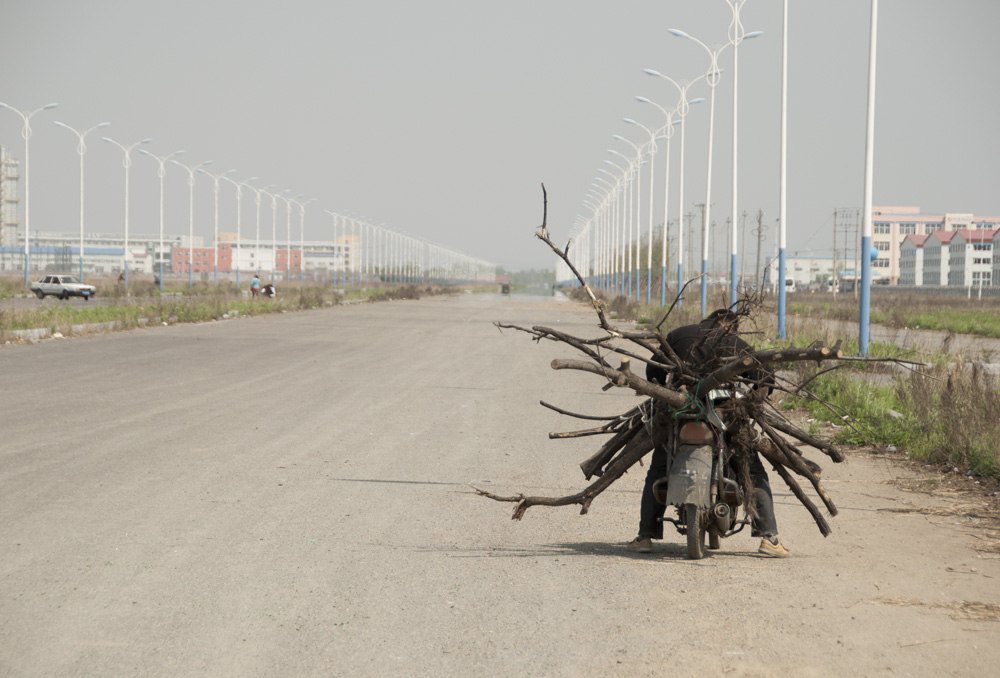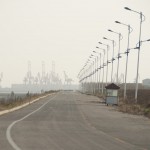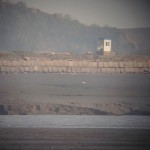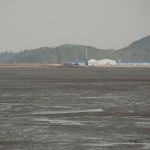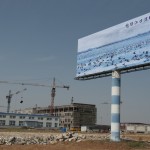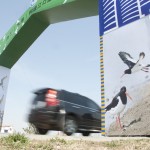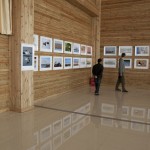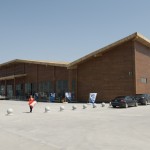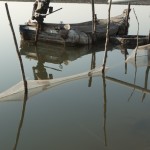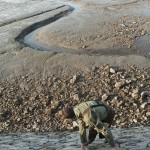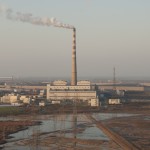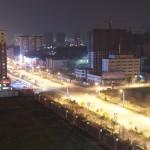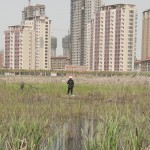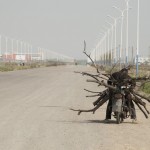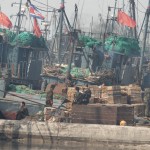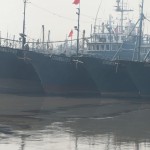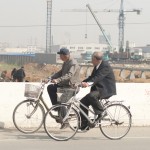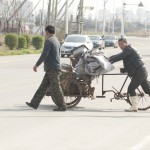Spotted Redshank. Terek Sandpiper. Dunlin. Lesser Sand-Plover. North Korean Border Guard. Red-necked St—wait, North Korean what?
I was at the northern most point of the Yellow Sea, scanning an extensive, undulating mudflat on the bank of the Yulu River. A quiet cement road, lined with derelict light poles, ran down the Chinese shoreline to my left and right. Directly in front of me – separated by about five hundred meters of mud – was North Korea.
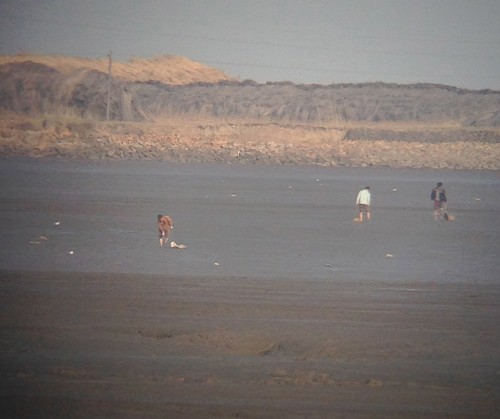
As a North American birder, it was thrilling to watch sandpipers and plovers, many unique to East Asia, forage in brilliant breeding plumage. The late afternoon sun was falling behind me and the air was still. Dream conditions for a birder to appreciate the crisp whites and oranges of Terek Sandpipers and the red highlights of the charcoal black Spotted Redshanks.
But as a Westerner, I couldn’t believe that I was looking directly at North Korea, the most secretive nation in the world. Their shoreline was sparse save for a few dilapidated border patrol outposts and a dirt road where people casually strolled in the evening sun. In the foreground, men foraged for clams, dragging their bulging bags in the mud behind them. In the background lay agricultural fields capped by verdant hills. A large building, likely a factory, sported paint fading like the commercial ambitions under which it was built.
Years ago, the Chinese riverfront where I was standing may have looked the same to them. Now, however, the skyline was interrupted with construction cranes and apartment blocks looming over a sprawl of factories. The Port of Dandong is touted as the new commercial gateway to East Asia, and it looked like they wasted no time (or money) to make that a reality.

But this area is crucially important to shorebirds migrating to Siberian breeding grounds from as far south as Australia and Southeast Asia. And that’s why the Cornell Lab of Ornithology was here. In 2011, Gerrit Vyn, a multimedia producer at Cornell, captured the first footage of the critically-endangered Spoon-billed Sandpiper on nest. In the following years, he filmed the species on its wintering grounds in Myanmar and in migration on both the Chinese and Korean sides of the Yellow Sea (read about the Cornell expedition to South Korea).
The Yellow Sea is a crucial ecosystem that sustains rich fish and bivalve stocks that feed both birds and a growing human population. This body of saltwater is rimmed by population centers in China and the Korean Peninsula that total 600 million people. That’s not a typo. For reference, that is double the population of the United States clustered around a body of water the size of Montana.
Shorelines, which feed humans and migrating shorebirds alike, are increasingly threatened by commercial development. Three quarters of South Korean mudflats, as an example, have already been lost.
Cornell planned a two-week expedition to this area to gather footage of significant staging areas for two species of shorebirds. The first was focused on Bar-tailed Godwits in the Yulu Estuary in northeastern China.
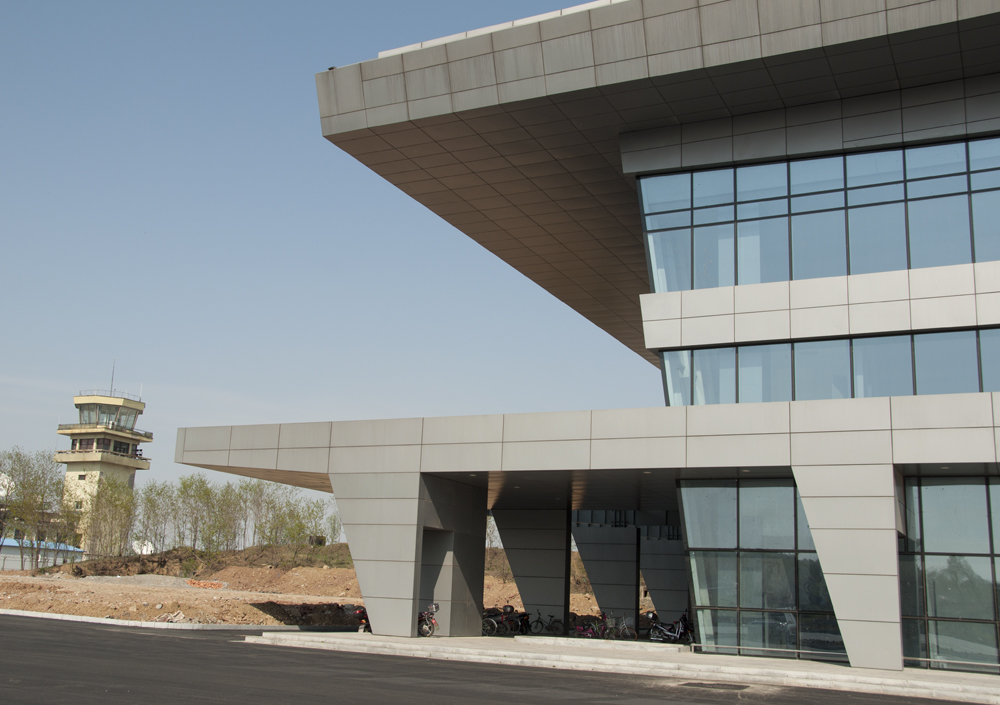
After an hour flight from Beijing, we arrived in the new – and surprisingly empty – Dandong Airport: its shiny marble façade juxtaposed against the weathered lime-green exterior of the old airport next to it. Camouflaged military buildings flanked by fighter jets suggested that a border – and a bellicose neighbor – lay near.
The wide arterial into the city was buzzing with bikes, mopeds, tractors, and trucks. Ramshackle street-side stores with dirt parking lots gradually made way for large factories and apartment high-rises—simple and imposing.
We passed overloaded mopeds and dusty tractors on our way to our five-star hotel. The twenty-six story, yellow behemoth was abutted on three sides by small grassy plots. On the forth was a coal plant; Marsh and Wood Sandpipers and Black-winged Stilts foraged in the smokestack’s shadow.
We decided to spend our first evening scouting the nearby mudflats. On our way out of the city, the view from either side of our van alternated between pockets of vegetation and the buildings and cranes seeking to replace them. A harbor, clogged with weathered fishing boats, hinted that we were close to water. Several dry docks, lined with scores of nautical clones of the same blue wooden vessels, indicated that the industry was important to the area.
Within a mile, the road cut through a seemingly endless series of large rectangular ponds. We asked our guide.
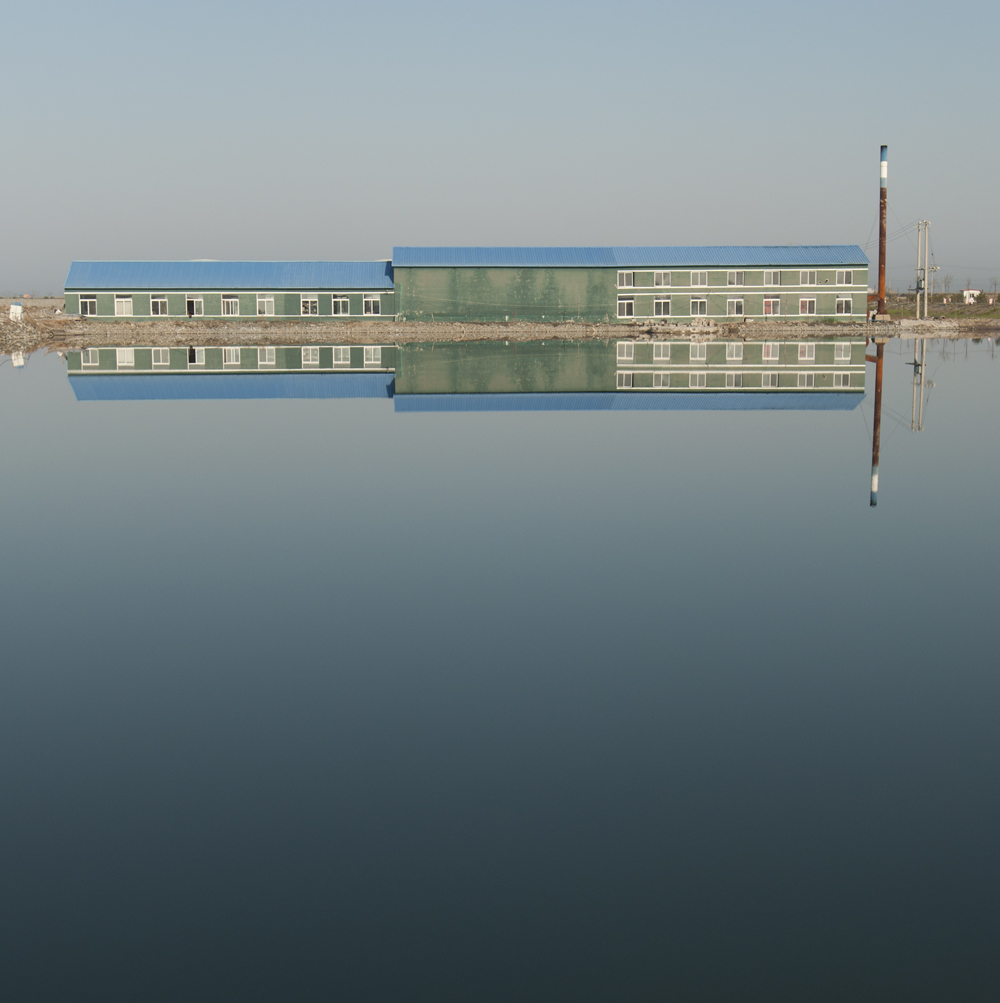
“Those are for jellofish,” he replied.
Jellofish? Both Gerrit and I were confused. After we asked him again (and again), we realized that he was referring to jellyfish. Yes, jellyfish. For human consumption. He was only a letter off, but our western minds refused to let us believe that hundreds of pools would be used to cultivate this gelatinous quarry (I’ve had jellyfish flash-fried with sesame oil and chili—it’s delicious).
We passed abandoned factories and a gleaming visitor center constructed to publicize the upcoming birdwatching festival. We took a right on an avenue with enough length and girth to safely land a Learjet, and drove all the way until its abrupt end at the raised edge of a dyke.
We could hear the calls of shorebirds as soon as we opened the van’s sliding door. We scrambled up the dyke and scanned the beautifully unaltered mud: sandpipers and plovers were everywhere.
The sun was dropping behind a horizon already obscured by a thin layer of smog. The clouds in front of the horizon began to undulate in the wind.
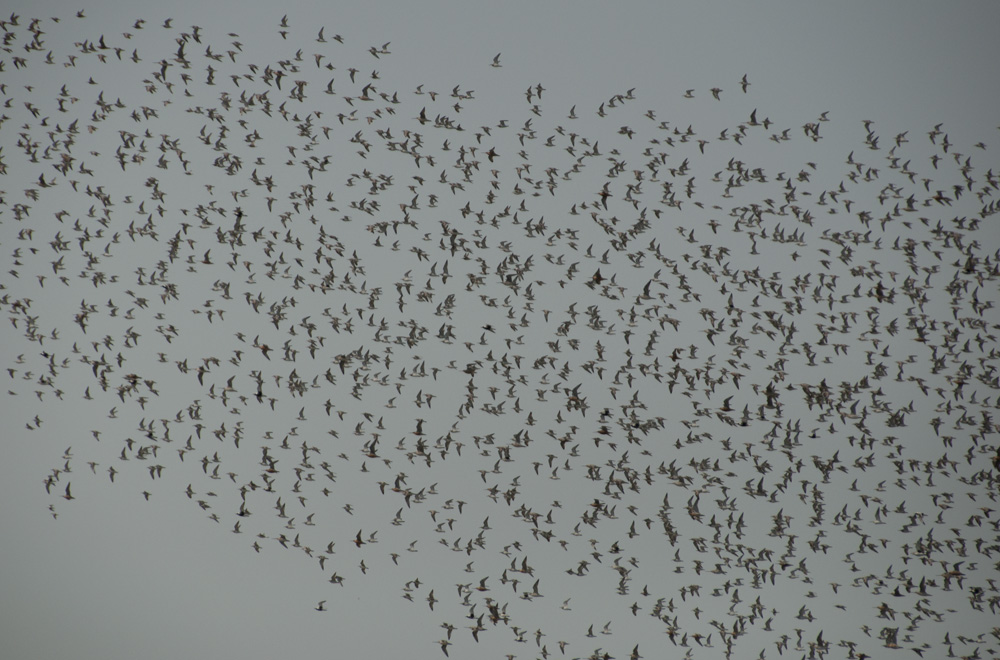
They weren’t clouds.
Tens of thousands of Bar-tailed Godwits and Great Knots began wheeling, like an airborne amoeba, in front of our vantage point. It was the greatest migration spectacle that either of us had ever seen.
And it was our first day.
Dinner was back at our hotel. We selected our meals from the live aquariums on the first floor and their preparation from the backlit color photos on the wall. Our private dining room on the fourth floor included a TV that received the North Korean television channel. Commercials of missiles and goose-stepping soldiers were interspersed by news programs dedicated to the activities of the benevolent leader Kim Jung Un. I was transfixed. And that wasn’t the half of it.
Our colorfully-dressed waitresses were also from North Korea. Not defectors, but North Koreans who commute over the border to work at our hotel. They were fluent in Chinese and our guide learned that they stayed in a special section of the hotel where they are not allowed to speak to other people, especially guests. Also, it became clear that the male waiter who was helping expedite orders out in the hallway had another purpose: he was their North Korean handler.
The women were incredibly sweet. But their demeanor frosted over once they found out that we were from the United States. Thankfully, the few Korean word I remembered (“hello!” “thank you!” “nice to meet you” “spicy rice bowl!”) helped thaw our exchange.
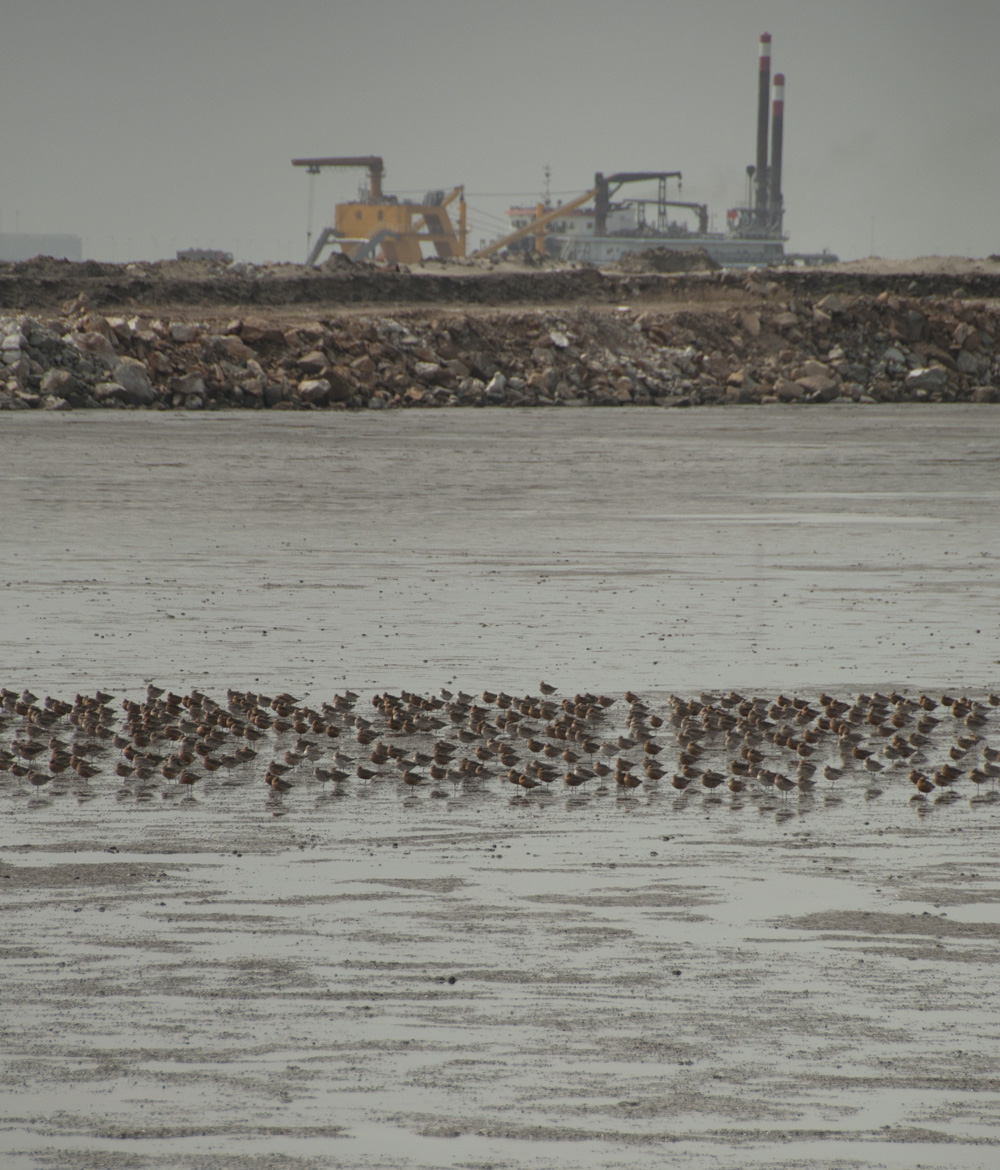
The following morning we arrived at the muddy shore at daybreak, positioned so the rising tide would push the shorebirds towards us, me armed with a parabolic microphone and Gerrit with his arsenal of optics. The beautifully crisp-red Bar-tailed Godwits confided in Gerrit on a couple occasions, and I was able to record a few sounds of shorebirds without the ubiquitous fireworks. The descending whistles and crackling roar of firecrackers from the harbor marked the departure of a new boat from dry dock; Loud pops from the mudflats identified fishermen protecting their patch of clams from migrating birds.
And so our days continued: we woke up early and headed to the mudflats. Hours later we’d return, boots caked in mud, to the smooth marble floors and red carpets of our hotel. Each way, we’d pass the same empty factories, littered streets, and oil-soaked harbor and I’d question how any animal – feathered or otherwise – could maintain in this relentless onslaught of modernization.
But whenever I stepped over the dyke, and crouched quietly at the edge of the mud, I’d marvel at the birds that persisted on this sliver of habitat that remained. The calls of sandpipers and plovers – some critically endangered – still punctured the din of industrialization.
Hopefully this project will help ensure that appreciate ears are present to hear them. A bird festival, a new visitors center, and a booming interest in bird photography suggest that the proverbial tide may be shifting in the right direction.
Hopefully it exposes enough mud.
